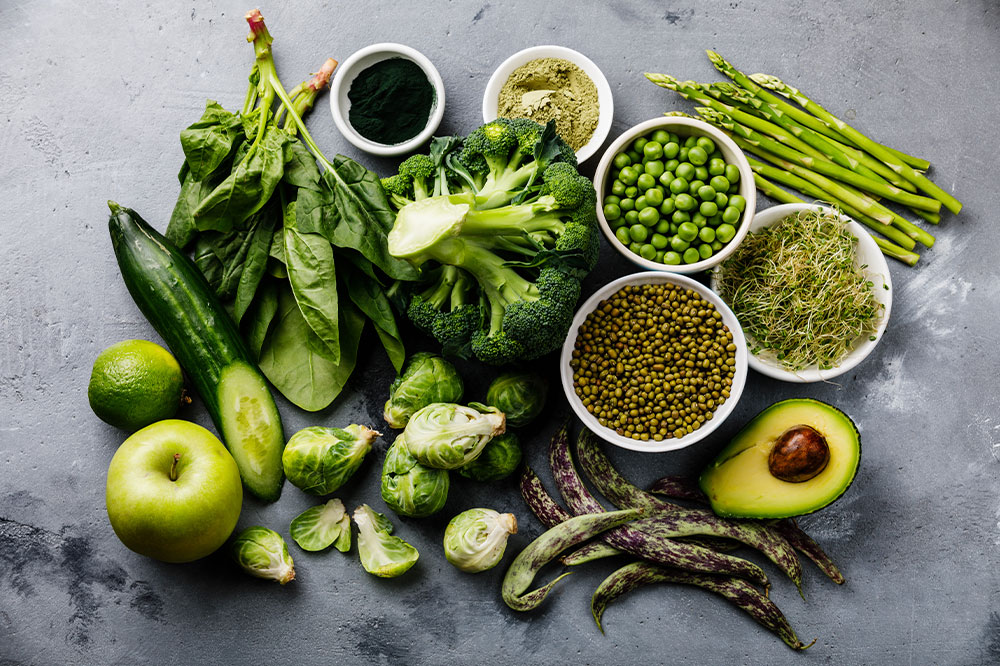
Keto meal plan – Advantages, foods to eat and avoid
Carbohydrates supply the necessary glucose to produce energy for our bodies. Our body uses fat to replenish our energy if it does not receive adequate carbs. This process is called ketosis. As our body begins to burn fat faster, it offers multiple benefits. A keto nutritional plan is designed to cut down drastically on the number of carbs while increasing the quantity of fat and protein in every meal we eat. The Keto meal plan overhauls our standard nutritional regime while ensuring the body gets enough nourishment.
Composition
The standard American meal plan has about 50% carbs, 35% fat, and 15% protein. In contrast, the meal plan for keto is a low-carb, moderate-protein, and high-healthy fat nutritional regime. A typical keto plan comprises 70% fat, 10% carbs, and 20% protein in every meal, including snacks and beverages. The composition can be altered a little if a person has specific nutritional requirements. Experts recommend that the total intake of carbs should be less than 50 grams daily. You can consume about 1.2 to 2.0 gms of protein per kg of your body weight for your protein requirement. You must include only healthy fat, protein, and carbs to ensure you reach your goal through a keto plan.
Foods to eat
The underlying principle of a keto nutritional plan is to minimize carbs and include healthy fats and protein. While using store-bought ingredients, please read the labels carefully to ensure that they do not contain hidden fats and carbs that are not suited for a complete keto nutritional regime. The food items best suited for a keto regime are quite comprehensive. It helps you plan your menu well in advance and creates new and exciting menus that can motivate you to stick to your meal plan and not create any carb cravings.
Vegetables
Fruits and vegetables are the primary sources of carbs in your keto nutritional regime. Replace root vegetables with fresh green vegetables like leafy green vegetables, cruciferous vegetables, broccoli, asparagus, beans and bean sprouts, mushroom, tomatoes, onion, garlic, jalapenos, squashes, artichoke, sauerkraut, and kimchi to get the best out of a keto meal.
Fruits
The Keto meal plan is usually strict and restrictive. Limit yourself to one serving of fruit daily to stay within the carb limit. Some ideal fruits you can include in a keto meal plan include avocados, berries, kiwi, olives, and rhubarb.
Fats
Olive oil, coconut oil, and avocado oil are the purest fat sources because all plant-based oils have zero carbohydrates. Also, most nuts and seeds are low in carbs and high in healthy fats, making them an ideal choice.
Protein
Protein is an integral component of such meal plans. Use lean meat and avoid processed meat, as it may contain hidden sugar and starch. Some ideal protein sources are pork, beef, lamb, goat, quail, chicken, sausages, bacon and prosciutto, organ meats, jerky, biltong, and pork rinds.
Sea Food
Sea Foods are ideal for those on a keto meal plan as they are naturally lean meat high in protein and healthy Omega-3 and Omega-6 fatty acids. Some options include trout, salmon, mackerel, herring, tuna, scallops, shrimp, clams, oysters, and squid.
Dairy products
Dairy products are keto-friendly since they are low in carbs and include many high-fat options. Some products that may help are hard and soft cheeses, heavy cream, greek yogurt, sour cream, kefir, quark, Crème Fraiche, and skyr.
Beverages
Coffee, espresso, green tea, or herbal tea are good beverage options while on a keto meal plan. Besides these, still or sparkling water and filtered water can also help.
Protein sources for vegans and vegetarians
Some ideal protein sources for vegetarians and vegans are eggs, protein powder, whey powder, tofu, tempeh, seitan, meat substitutes like Boca burgers and vegan chicken strips, protein bars, and natoo.
Foods to avoid
Avoid foods rich in carbs, starch, and fats as much as possible to achieve your goal faster. The foods to avoid include processed food and food rich in sugar, carbonated beverages, wine and cocktails, grain-based food like pasta and bread, most fruits, root vegetables, low-fat products, and junk and fast food.
Benefits of a keto plan
Some key benefits of a keto nutritional regime are reduced body mass index (BMI), regulation of blood sugar levels, blood pressure, and cholesterol levels, improved concentration, increased energy, improved appetite, and improvement in symptoms of epilepsy.
Side effects
People may notice changes in their bodies after two or three weeks of switching to a keto meal plan. It is important to remain hydrated daily. During the two or three-week adaptation period, a few may notice cramps, constipation, nausea, and aches, leading to irritation. Some may experience muscle pain, palpitations, and exhaustion. Some signs of your body achieving ketosis are increased urination, dry mouth, and bad breath. The adaptation period is called keto flu and may pass soon. However, it is also possible that you may not go through keto flu.
Tips to achieve ketosis
Ketosis can help patients with high BMI, diabetes, epilepsy, metabolic syndrome, polycystic ovary syndrome, autism, and Parkinson’s disease. Some tips that can help you achieve optimal ketosis and derive the maximum benefits of a keto plan include staying committed and self-motivated, cutting out foods gradually, monitoring your food intake, and eating only when hungry. Besides these, talking to a nutritional expert to understand how it may impact your health and removing food that is not ideal for a keto plan from your pantry will also help. One should also ensure to stock the refrigerator and pantry with keto-friendly food. Preparing weekly plans in rotation to prevent monotony will prove beneficial. Watch the changes in your body and adjust your plan accordingly.




